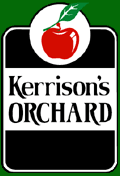|
Growing apples is easy - plant a tree and, in no time, harvest enough fruit for your family, your neighbours and all your relations.
Well, there is rather more to it than that.
You have to select the variety, you need to know a little about rootstocks and then there is the matter of pests, pruning and grafting.
Choosing a variety depends on what sort of apples you like (and when you want to pick them). As you will see from our harvest schedule, different varieties ripen from as early as February to as late as June. If you want Granny Smiths in March, bad luck! And if you choose an early-maturing variety (such as Gala or Jonathan) you can cut up to four months off the period you have to spray.
Most people in today's small backyards will prefer trees on dwarfing rootstock. Apple trees are quite complex systems. The rootstock, the foundation of the tree, is selected primarily for tree size but also for resistance to various problems (such as wooly aphid). The part which produces the apples, called the 'scion', is grafted onto the rootstock. If you look at an established apple tree you can usually spot the graft a few centimetres above the ground - a swelling or discontinuity in the trunk.
Nurseries/Garden Centres usually get their bare-rooted trees/shrubs in around mid-year. Most apple trees are sold bare-rooted but some nurseries pot them up. Choose a healthy-looking plant and make sure, if bare-rooted, that the roots are moist. Do not allow the roots to dry out and plant as soon as possible.
Dig a hole large enough to accommodate the roots, trim any damaged roots, spread the roots as you replace the soil, flood with water - about a bucket per tree - and make sure that the roots are in close contact with the soil (tamp down gently). Plant so that the graft is about 100mm clear of the ground (otherwise the scion may put down its own roots). Support with a stake if necessary.
If you buy your tree potted up, rather than bare-rooted, remove the pot (usually it can be tapped off, otherwise use surgery) and plant as above without disturbing the root-ball (unless it is root-bound, in which case hose off all the soil, tidy up and trim damaged roots and proceed as for bare-rooted).
Spraying
The main apple pests are a fungus called Black Spot (less important now that it rarely rains) and an insect - Codling Moth - whose entire life-cycle revolves around apples. Once gardeners could use a combined fungicide/insecticide. This seems no longer to be available. So you will have to ask your local garden centre what they have. Pyrethrum is a good organic insecticide. If you spray for Codling every fortnight/three-weeks from the time fruit appears you should be OK. The objective is not zero damage. Rather you seek to ensure that you, rather then the pests, get most of the fruit.
Black Spot is more difficult. Again, if you add a fungicide like Captan when you spray for Codling, then you should be OK. But, in these dry times, the risk of Black Spot (also called apple scab) is usually low.
Commercial growers monitor pests and conditions and only spray when absolutely necessary. But, for home gardens, with dozens of neighbours' unmaintained trees, regular sprays are appropriate.
To avoid missing a spray, keep your spraying gear in a convenient (but sensible) place close to a tap so that you can spray your trees in fifteen minutes or less (our thousand trees take about an hour).
Don't worry too much if, in the odd year, you do not get much fruit. This happens - a late frost or you may have missed a spray at a critical time. Also apples tend to bear bi-ennially - after a heavy crop one year the next crop is light. But an apple tree can produce for fifty years or more so the odd off-year is no big deal.
Pruning and Grafting
If you are prepared to put in the effort you can learn to prune and even to graft your own trees. Grafting is interesting and usually unsuccessful. But, as with most things, persistence brings success.
Are My Apples Ready to Pick?
All varieties demonstrate ripeness by getting a bit yellow. The only way for the home gardener to learn how to tell if fruit is ripe is by trial and error. Your taste buds will tell you instantly whether the degree of yellowing, for the particular variety/strain, indicates that the fruit is ripe.
Professional Help
We recommend Easycare - http://www.easycare.com.au/ . They can prune your trees and advise on any problems..
For More Information, we are happy to answer questions - in person or by email.
|

